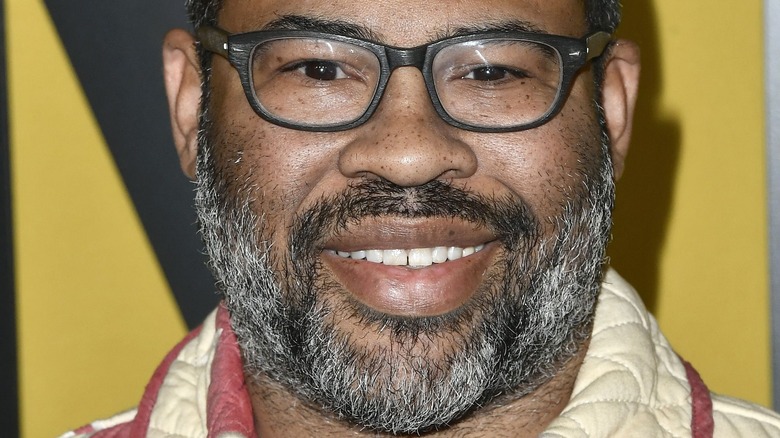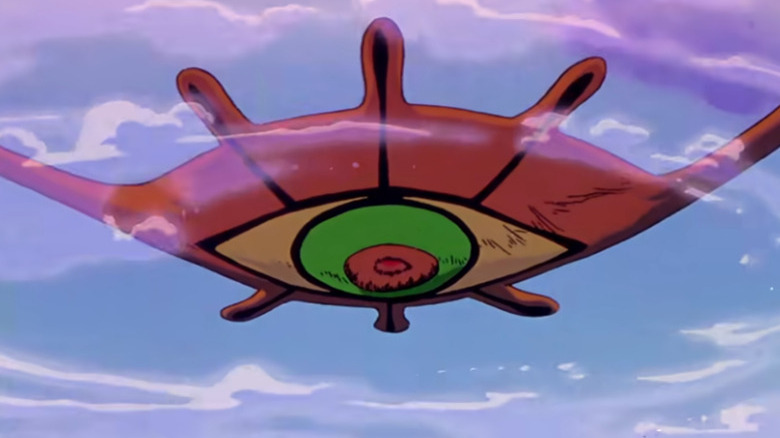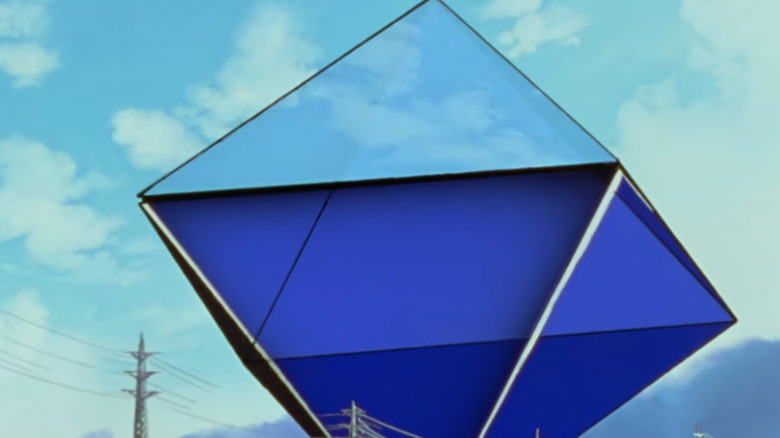How Evangelion's Terrifying Angels Inspired Jordan Peele's Nope
Jordan Peele's "Nope" is yet more proof that the director knows how to break fresh and terrifying new ground in the realm of horror. "Nope," which also incorporates elements of the science fiction and Western genres, details a UFO hunt by the Haywood siblings OJ and Em (Daniel Kaluuya and Keke Palmer) after the duo encounters some bizarre incidents on the family ranch. Before its premiere, the plot of "Nope" was shrouded in mystery. However, that did little to hurt its success at the box office or its praise from the majority of critics.
"Nope" premiered in July 2022, but even now it still has many fans talking. Given its deep well of Easter Eggs and movie references, it's easy to see why the discussion continues. "Nope" is filled with clever callbacks and references to other notable Hollywood works, such as "The Wizard Of Oz," "The Shining," and even "The Scorpion King." It also pulls from the realm of anime, with its most recognizable nod being an iconic "Akira" bike slide. But Katsuhiro Otomo's cyberpunk classic isn't the only anime that inspired "Nope." In fact, the Angels of "Neon Genesis Evangelion" arguably provided "Nope" with its most terrifying inspiration.
Spoilers for "Nope" ahead.
Evangelion's Angels served as design inspiration for Nope's alien entity
"Nope" uses audience expectations to its advantage, particularly when it comes to the alien monstrosity that gruesomely eats and digests its victims. Much of the film hints that the Haywood siblings' UFO — which gets dubbed Jean Jacket — is a flying saucer probably containing little strange people from a distant galaxy. However, the saucer itself is actually alive, and its simple circular form evolves into something akin to an artistic origami kite or even a jellyfish. Speaking with Befores and Afters magazine, "Nope" visual effects supervisor Guillaume Rocheron revealed that Jean Jacket's form was partially inspired by classic sci-fi movies like "The Day The Earth Stood Still." However, minimalist Angel designs from "Neon Genesis Evangelion" also played a significant part.
"When you look at the Angels, it's like they have a purpose or a function or a way to operate and a design strictly tailored to just do that," Rocheron said in the interview. "So we started a few rounds of designs on this, and then very quickly we came in with a very 'Evangelion'-esque alien entity that looked like he was an origami, [and] at the same time, a very simple design." Jean Jacket would fit in with the anime classic's Angels perfectly, such as the octahedron-shaped Ramiel or the sea creature likeness of Gaghiel. In addition to revealing that they pulled from "Evangelion" for the design, Rocheron also noted in the interview that he and Peele came up with Jean Jacket's final form first and essentially worked backward to create its initial saucer form.
The animators had a production reason for the Angel designs in Evangelion
"Neon Genesis Evangelion" broke the mold for the mecha genre and anime in general. On the surface, its apocalyptic story seems like the setup for a familiar tale of human survival against powerful beings. However, "Evangelion" is more of a story that deals with mental health struggles, specifically from the viewpoint of the show's creator, Hideaki Anno. The artwork and the designs scream that this isn't like its predecessors, such as "Getter Robo" or "Tetsujin 28." The Eva Units are bio-organic creatures that often look more devilish than what they're battling. And as for the Angels, their designs in the series aren't anything like the human-like entities found in other TV shows.
The fact that some of the minimalist "Evangelion" Angel designs artistically inspired "Nope" is funny, considering that the anime's production team had a more practical reason behind them. As the series progresses, the Angels in "Evangelion" get less anthropomorphic and more simple in terms of shape. According to a fan-translated interview from the "RahXephon Complete" book, Anno noted that the Angel designs became less complicated because not doing so would have made production more challenging. By the time the series got to its fifth and sixth episodes, it didn't have the same amount of animators as it did in the beginning. It was a change made out of necessity, but it ended up making the creatures more iconic, inspiring Jordan Peele and countless other creators in the years that followed.


